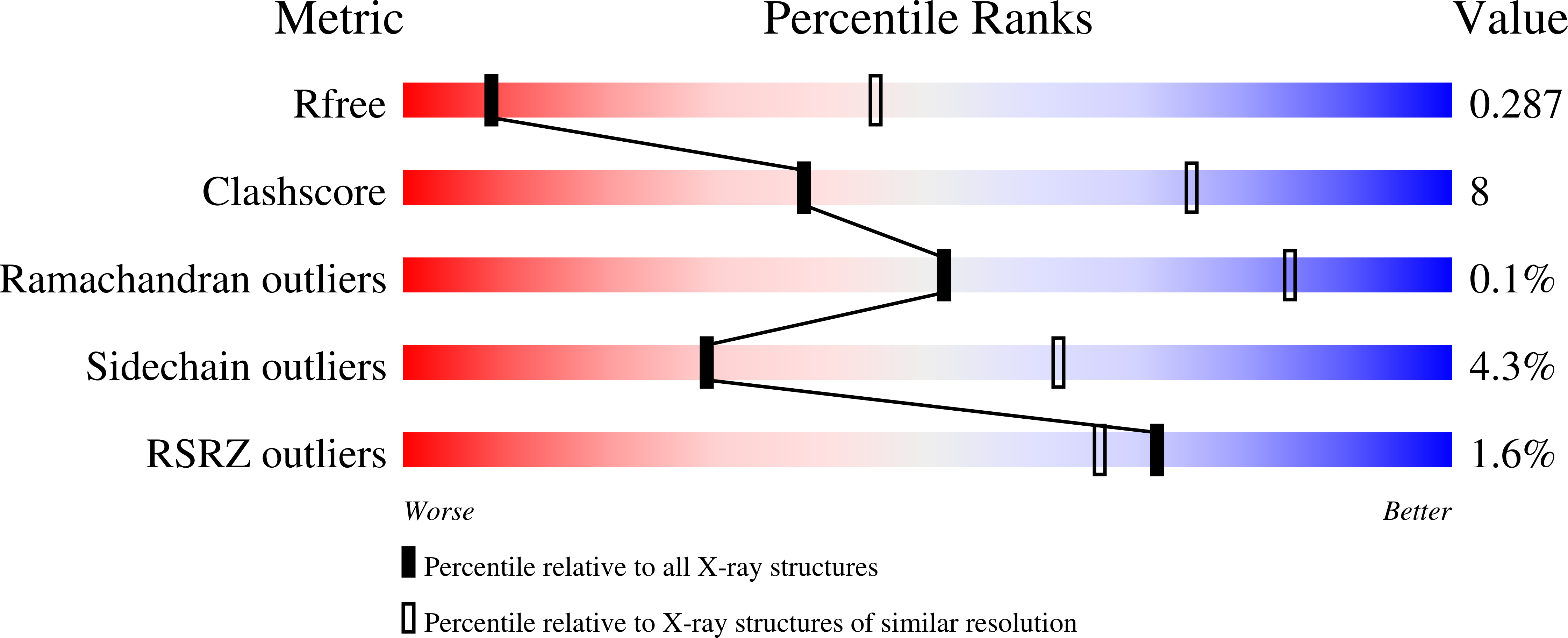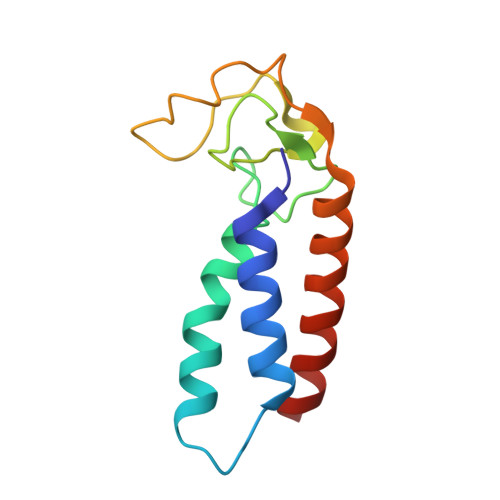Msl1-Mediated Dimerization of the Dosage Compensation Complex is Essential for Male X-Chromosome Regulation in Drosophila.
Hallacli, E., Lipp, M., Georgiev, P., Spielman, C., Cusack, S., Akhtar, A., Kadlec, J.(2012) Mol Cell 48: 587
- PubMed: 23084835
- DOI: https://doi.org/10.1016/j.molcel.2012.09.014
- Primary Citation of Related Structures:
4B7Y, 4B86 - PubMed Abstract:
The Male-Specific Lethal (MSL) complex regulates dosage compensation of the male X chromosome in Drosophila. Here, we report the crystal structure of its MSL1/MSL2 core, where two MSL2 subunits bind to a dimer formed by two molecules of MSL1. Analysis of structure-based mutants revealed that MSL2 can only interact with the MSL1 dimer, but MSL1 dimerization is MSL2 independent. We show that Msl1 is a substrate for Msl2 E3 ubiquitin ligase activity. ChIP experiments revealed that Msl1 dimerization is essential for targeting and spreading of the MSL complex on X-linked genes; however, Msl1 binding to promoters of male and female cells is independent of the dimer status and other MSL proteins. Finally, we show that loss of Msl1 dimerization leads to male-specific lethality. We propose that Msl1-mediated dimerization of the entire MSL complex is required for Msl2 binding, X chromosome recognition, and spreading along the X chromosome.
Organizational Affiliation:
Max-Planck-Institut für Immunbiologie und Epigenetik, Stübeweg 51, 79108 Freiburg im Breisgau, Germany.
















